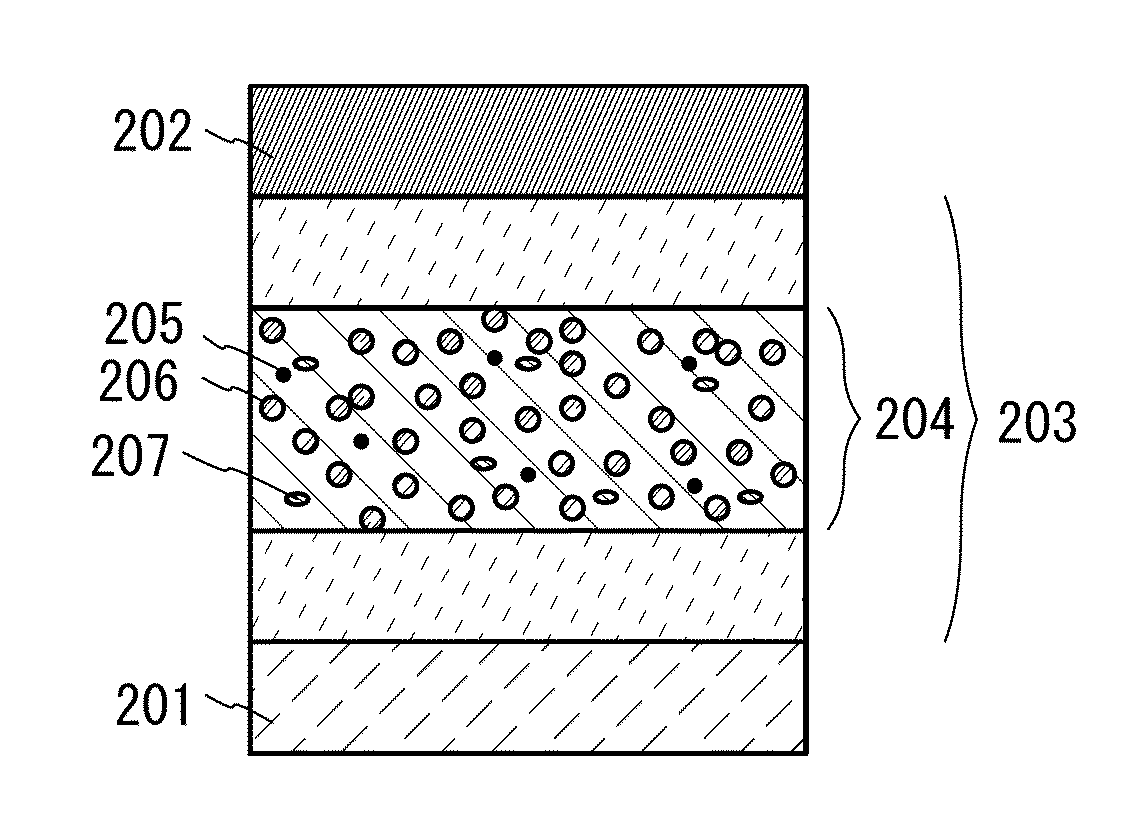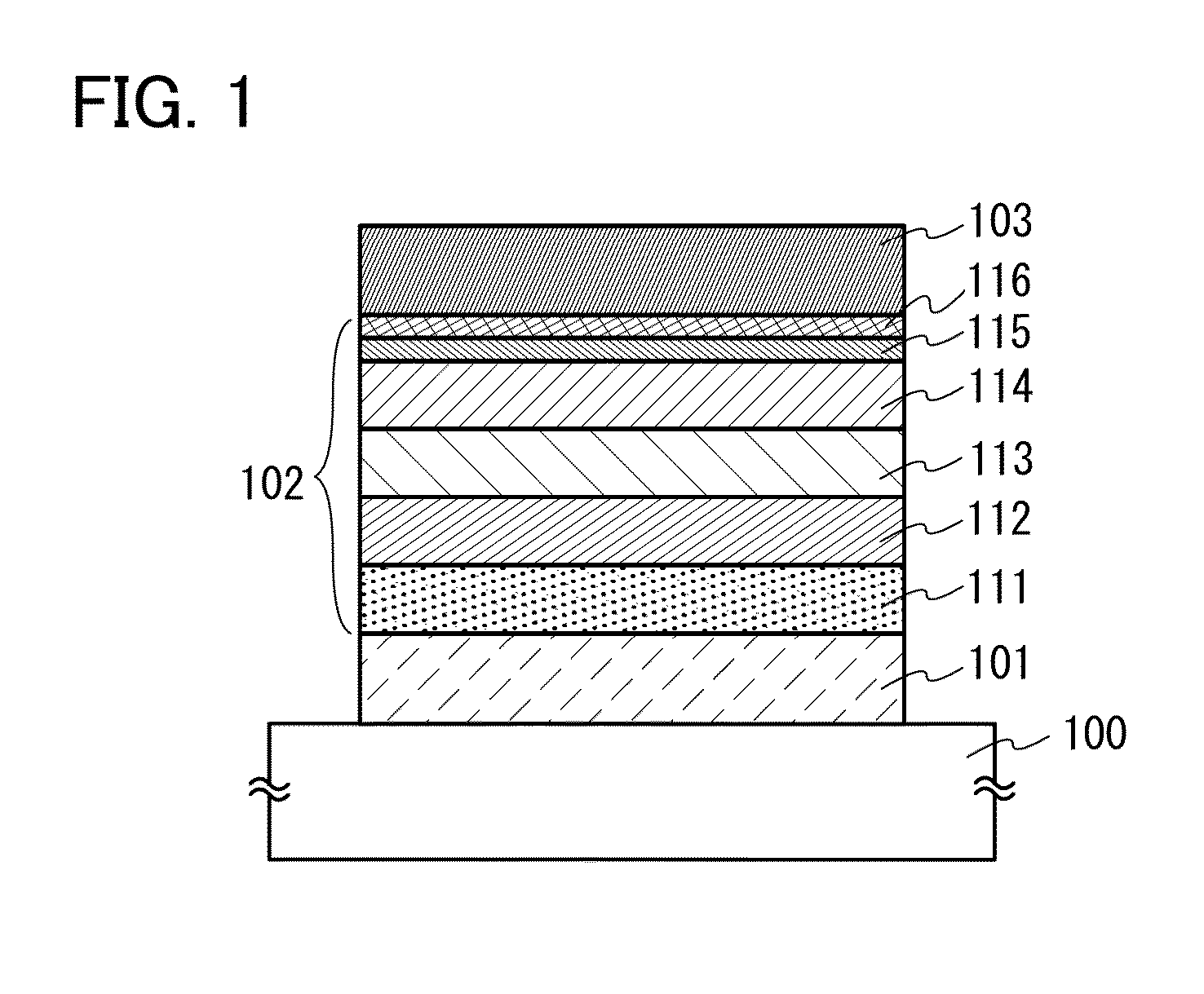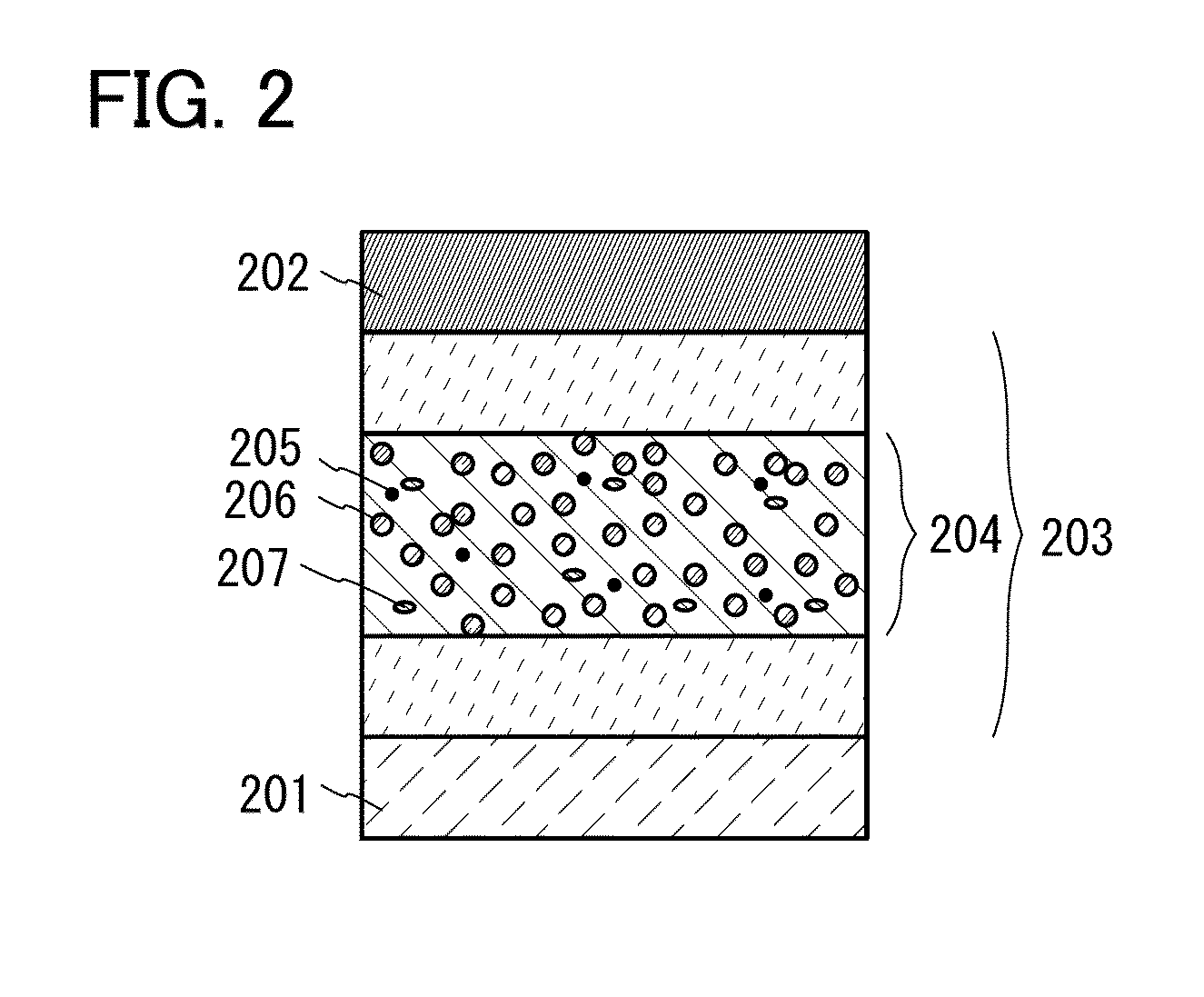Light-emitting element, light-emitting device, electronic device, lighting device and organic compound
a technology of light-emitting devices and organic compounds, which is applied in the direction of luminescent compositions, thermoelectric devices, chemistry apparatuses and processes, etc., can solve the problems of difficult to obtain features, and achieve the effects of low driving voltage, low power consumption, and high current efficiency
- Summary
- Abstract
- Description
- Claims
- Application Information
AI Technical Summary
Benefits of technology
Problems solved by technology
Method used
Image
Examples
embodiment 1
[0083]In this embodiment, a structure of a light-emitting element, in which a light-emitting layer is interposed between a pair of electrodes and contains at least an organic compound and a phosphorescent compound, will be described with reference to FIG. 1.
[0084]In a light-emitting element described in this embodiment, as illustrated in FIG. 1, an EL layer 102 including a light-emitting layer 113 is provided between a pair of electrodes (a first electrode 101 and a second electrode 103), and the EL layer 102 includes a hole-injection layer 111, a hole-transport layer 112, an electron-transport layer 114, an electron-injection layer 115, a charge-generation layer 116, and the like in addition to the light-emitting layer 113. Note that in this embodiment, the first electrode 101 is used as an anode and the second electrode 103 is used as a cathode. The first electrode 101 is formed over a substrate 100. A glass substrate or the like can be used as the substrate 100.
[0085]When voltage...
embodiment 2
[0145]In this embodiment, a light-emitting element which includes a light-emitting layer containing a phosphorescent compound, an organic compound of one embodiment of the present invention, and two other organic compounds will be described with reference to FIG. 2 and FIG. 25.
[0146]A light-emitting element described in this embodiment includes an EL layer 203 between a pair of electrodes (a first electrode 201 and a second electrode 202) as illustrated in FIG. 2. Note that the EL layer 203 includes at least a light-emitting layer 204 and may include a hole-injection layer, a hole-transport layer, an electron-transport layer, an electron-injection layer, a charge-generation layer, and the like. Note that the substances given in Embodiment 1 can be used for the hole-injection layer, the hole-transport layer, the electron-transport layer, the electron-injection layer, and the charge-generation layer. Note that the first electrode 201 is used as an anode and the second electrode 202 is...
embodiment 3
[0178]In this embodiment, as one embodiment of the present invention, a light-emitting element (hereinafter referred to as tandem light-emitting element) in which a charge generation layer is provided between a plurality of EL layers will be described.
[0179]A light-emitting element described in this embodiment is a tandem light-emitting element including a plurality of EL layers (a first EL layer 302(1) and a second EL layer 302(2)) between a pair of electrodes (a first electrode 301 and a second electrode 304), as illustrated in FIG. 3A.
[0180]In this embodiment, the first electrode 301 functions as an anode, and the second electrode 304 functions as a cathode. Note that the first electrode 301 and the second electrode 304 can have structures similar to those described in Embodiment 1. In addition, although the plurality of EL layers (the first EL layer 302(1) and the second EL layer 302(2)) may have structures similar to those described in Embodiment 1 or 2, any of the EL layers ma...
PUM
 Login to View More
Login to View More Abstract
Description
Claims
Application Information
 Login to View More
Login to View More - R&D
- Intellectual Property
- Life Sciences
- Materials
- Tech Scout
- Unparalleled Data Quality
- Higher Quality Content
- 60% Fewer Hallucinations
Browse by: Latest US Patents, China's latest patents, Technical Efficacy Thesaurus, Application Domain, Technology Topic, Popular Technical Reports.
© 2025 PatSnap. All rights reserved.Legal|Privacy policy|Modern Slavery Act Transparency Statement|Sitemap|About US| Contact US: help@patsnap.com



